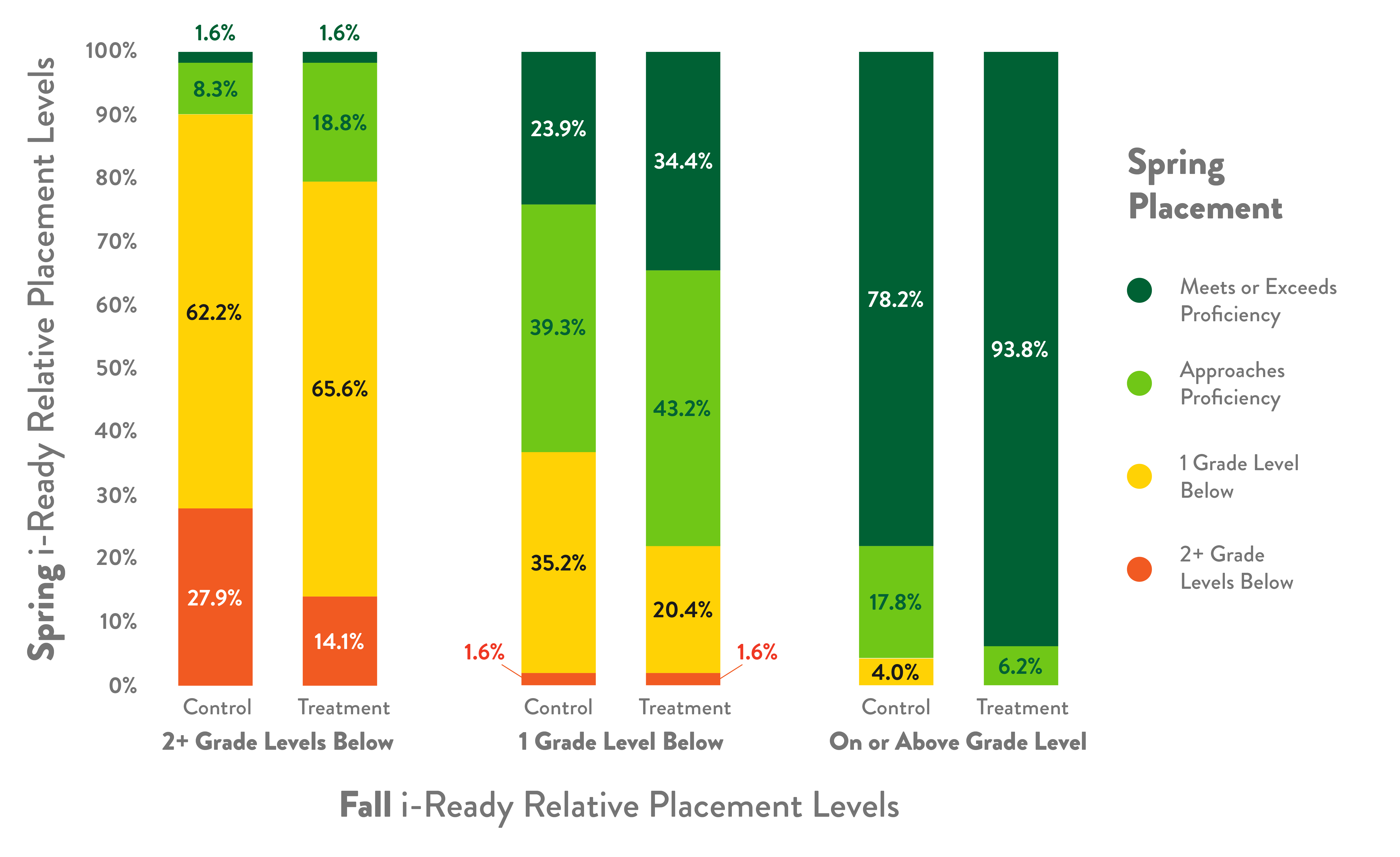
New research conducted by ExploreLearning found that elementary students using ExploreLearning Frax—an adaptive, game-based program that helps students build mastery of fractions—made significantly larger academic growth in math compared to non-users.
The study compared 2,530 grade 3 and 4 students in a large, suburban Florida school district who used Frax during the 2021-22 school year to a statistically matched sample of non-users. Researchers used the change in students’ i-Ready Diagnostic math assessments from fall to spring to measure the impact of Frax usage on student achievement.
Key findings: greater learning gains and upward mobility for Frax users, even the most at-risk
Researchers examined overall math scale scores to provide the most useful test of the impact of Frax on students’ overall ability to perform grade-level mathematics. Academic growth was measured by the absolute change in scale scores between the fall and spring assessments, the percentage of typical expected growth achieved, and changes in relative placement level (on-grade level or above, one grade level below, or two or more grade levels below).
Researchers found that compared to matched non-users, students who used Frax:
- Met or exceeded growth benchmarks at significantly higher rates. 3rd graders were 1.4x more likely to meet projections (gains equivalent to 5 weeks of instructional time), and 4th graders were 1.6x more likely to meet projections (gains equivalent to 8 weeks of instructional time), with the difference likely due to a stronger emphasis on fractions on the grade 4 assessment.
- Achieved a significantly higher percentage of expected growth. 3rd graders averaged nearly 16 percentage points more, with 4th graders averaging almost 28 percentage points higher.
- Were significantly more likely to reach or exceed grade-level proficiency in the spring, regardless of fall achievement levels.
- Students two or more grade levels below in the fall were 2x as likely to reach proficiency and were half as likely to remain in the lowest category.
- Students one grade level below in the fall were 1.4x as likely to reach proficiency and were 38% less likely to remain in below grade level.
- Even students on track to meet or exceed grade level in the fall were 3.5x less likely to fail to reach grade level.
When the researchers compared the gains produced by Frax to other interventions, the standardized effect sizes revealed that Frax was 3x more effective than the average educational intervention for 3rd graders and 5x more effective for 4th graders.
Student Achievement Mobility
from Fall Placement Level

Spring i-Ready relative placement levels based on fall i-Ready relative placement levels for control students (0 Frax missions) vs high usage treatment students (20+ Frax missions).
Unblocking student potential through fractions mastery
Fractions proficiency is widely recognized as a foundational pillar of elementary math due to its centrality to future learning. Fractions knowledge in grade five uniquely predicts students’ mathematics achievement in high school. Unfortunately, many students struggle to develop proficiency, hindering their ability to learn more advanced material.
The National Math Panel study found in a nationally representative survey of Algebra 1 teachers that fractions rated as the second greatest barrier to students mastering algebra (second only to word problems). Alongside their extensive review of the educational research literature, the Panel concluded, “The teaching of fractions must be acknowledged as critically important and improved before an increase in student achievement in algebra can be expected.”
ExploreLearning developed Frax to help all students succeed with fractions, unblocking pathways to success in algebra and future career opportunities, whether in STEM or other quantitative fields. Frax is efficient, easy to implement, and highly engaging, making it an excellent complement to any curriculum. These new research findings represent clear evidence that with appropriate tools, students of all ability levels can master fractions, building their self-confidence and laying the foundation for ongoing success in math.
Additional ESSA Level III research found that at-risk students who used Frax were more likely to achieve grade-level proficiency than non-users. Furthermore, all students who used Frax demonstrated greater math achievement on spring assessments.
